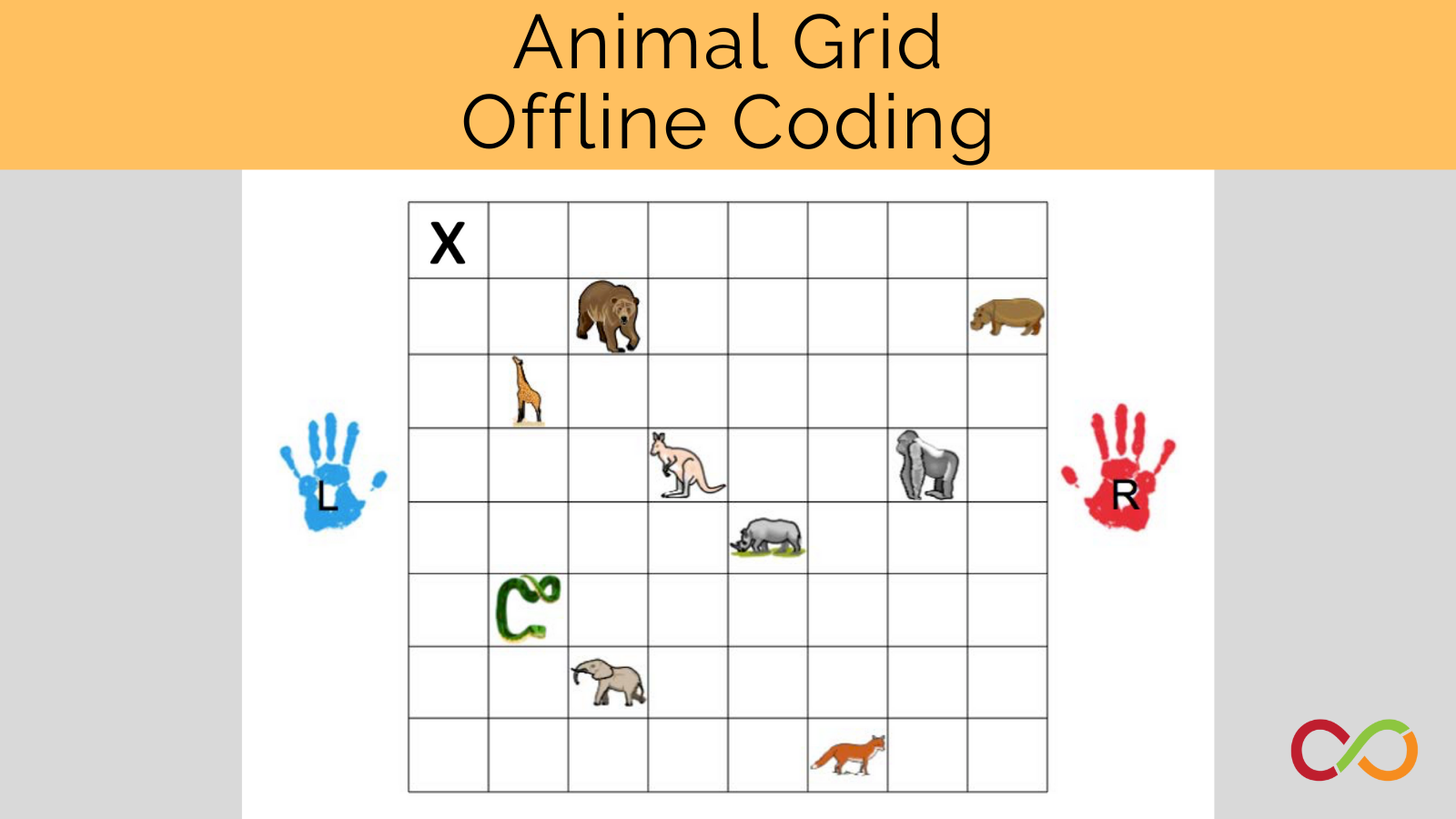Very Hungry Caterpillar
Age group
- Early Years (Age 3 to 6)
- Primary (Age 6 to 9)
Curriculum Goal
Kindergarten: Demonstrating Literacy and Mathematics Behaviour
Describe, sort, classify, build, and compare two-dimensional shapes and three-dimensional figures, and describe the location and movement of objects through investigation.
Primary: Geometry and Spatial Sense
- Give and follow multistep instructions involving movement from one location to another, including distances and half- and quarter-turns.
- Create computational representations of mathematical situations by writing and executing code, including code involving sequential events.
Primary: Patterning and Algebra
- Create computational representations of mathematical situations by writing and executing code, including code involving sequential events.
Context
- Two to four students and a teacher in-person or via video-conference online.
- Students should have prior experience using directional language.
Materials
In-person version
- A printout grid with directional language indicated (Appendix A)
- Print outs of a pear, apple, plum, strawberry, orange, caterpillar, chrysalis, butterfly & five black circles (Appendix B)
- The Very Hungry Caterpillar by Eric Carle
Online version
- Game File (Playingcards.io upload instructions)
- Video conference capabilities
- The Very Hungry Caterpillar by Eric Carle
Lesson
- Read the story The Very Hungry Caterpillar aloud to students.
- Review the order in which the caterpillar eats the fruit. Discuss the process the caterpillar must go through as it transforms from the chrysalis to becoming a butterfly.
- Show students the game board and have them lay out the fruit, chrysalis and butterfly.
- The goal of the game is to use directional language to guide the caterpillar through the fruit in the same sequence outlined in the book. Students then guide their partner to the chrysalis and the butterfly.
- Put the caterpillar in the bottom right corner.
- Each student should take a turn directing the teacher where to send the caterpillar. Each student can only give one directional instruction (e.g. Player 1 will say, “Move the caterpillar one spot up”, Player 2 will say, “Move the caterpillar four spots to the left.”)
- Once the caterpillar lands on a fruit, the teacher will place a black dot on the fruit indicating that the caterpillar has eaten their way through.
- The game ends when the caterpillar successfully eats through all the fruit, goes into its chrysalis and lands on the butterfly square.
Look Fors
- Can students break down the journey of the caterpillar into individual steps?
- Are students capable of identifying individual directions (e.g. up vs. down, left vs. right vs. sideways)?
- What directional language are students using?
- What strategies do the students use to communicate the instructions?
Extension
- If students are finding the game easy, remove the cues of the order the fruits that are eaten on the board. Require students to remember the order themselves.
- Change the directional language: Instead of up, down, left, and right, use quarter turn, half turn, three-quarter turn or by degrees (e.g. 90 degrees, 180 degrees) and then indicate the number of spaces to move.
- Integrate code commands into the game by creating cards or requiring students to write code cards.
- For lower-level early years, you can introduce the following stories and games:
- Penguin’s Adventure: Find a path for the baby penguin to reach home while avoiding obstacles. This book can be accompanied by a read aloud of Penguin Sets Sail by Jessica Linn Evans.
- Pollination Station: Help the bee pollinate all the flowers and get back to the hive while avoiding danger. This game can be accompanied by a conversation with students where they create their own story in the perspective of the bee.
